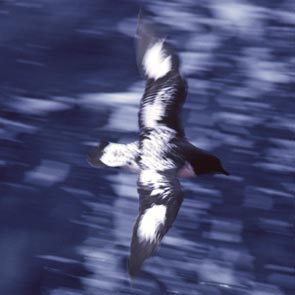Guidelines for aircraft operations near birds in Antarctica
ERA has carried out a range of work on the environmental implications of aircraft operations in Antarctica. Much of this work has been directed towards the achievement of practical guidelines for aircraft operations in order to protect wildlife as far as possible from harmful effects, and has been funded by the Government of the British Antarctic Territory over a number of years. The work originated with a paper prepared for the Scientific Committee on Antarctic Research reviewing The need for consistent guidelines for the operation of aircraft near concentrations of birds in Antarctica (pdf 417KB). An abbreviated version of this paper was submitted by the United Kingdom as Information Paper 39 (IP39) to the meeting of the Committee for Environmental Protection (CEP IV), held in St Petersburg, Russia in June 2001.
ERA developed the paper further for the UK to include more information about national practice in Antarctica, and as a basis for development of internationally accepted minimum guidelines. The UK submitted this paper as a Working Paper to CEP V, held in Warsaw in September 2002. This paper was welcomed by the CEP and referred to the Council of Managers of National Antarctic Programs (COMNAP) for consideration over how guidelines could be implemented from a practical operational point of view. This resulted in COMNAP submitting a revised version of the proposed guidelines to the CEP in 2004 (CEP VI, Cape Town), which were adopted as Resolution 2 of the 27th Antarctic Treaty Consultative Meeting (ATCM XXVII, 2004, Cape Town) (pdf available from this page).
A review paper by Colin Harris on the development of the guidelines has recently been published in the journal Biological Conservation as Harris, C.M. 2005. Aircraft operations near concentrations of birds in Antarctica: The development of practical guidelines. Biological Conservation 125: 309-22. (pdf 272KB). This paper provides more detail on the factors influencing interactions between aircraft and birds, as well as a more detailed review of the scientific basis for guidelines. A key conclusion is that while the interim guidelines now adopted are very welcome, there remains the need for much further research into the environmental effects of aircraft operations on wildlife in Antarctica. The guidelines should be revised and updated as new research results appear.
Following the adoption of the guidelines, ERA has continued to work on the development of practical tools designed to assist pilots take into account wildlife breeding localities while operating in the field.


